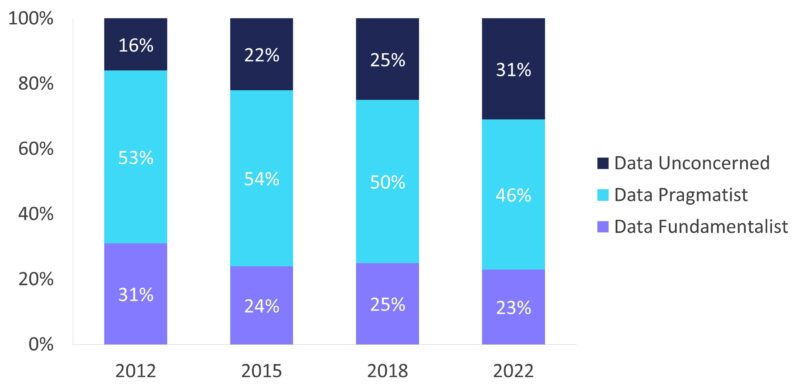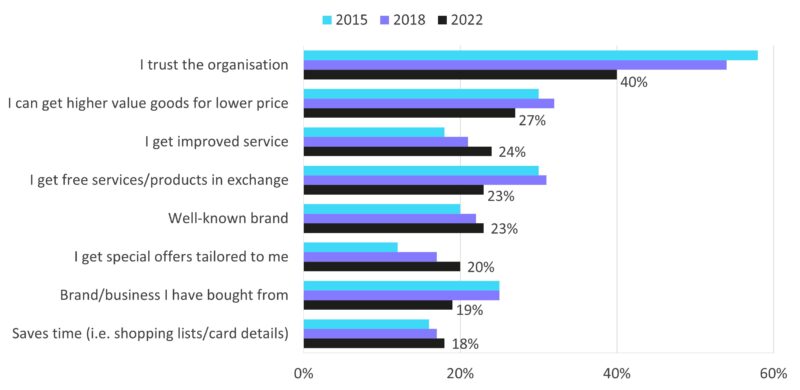Life after cookies
“The past is a different country: they do things differently there”.
I’m pretty certain when LP Hartley wrote this wistful line the changing world of advertising, data and privacy weren’t foremost in his mind. However, in five years from now, when all the current arguments surrounding the elimination of third-party cookies are long gone, that’s likely how we’ll view the universal use (and abuse) of a simple text file and the data it unlocked.
From one perspective, life after third-party cookies is very simple.
The majority of media is transacted without third party cookies already. Whether by media type, first-party user preferences, device or regulatory mandates, lots of money already moves around without reference to third-party cookies. As the saying goes “The future is already here, it’s just not very evenly distributed”.
That’s deliberately rather glib. Some sections of the media still rely upon third-party cookies and not every media owner has an obvious opportunity to build a first-party relationship with consumers. The advantages of an identifier that allows streamlining of experience for consumers whilst delivering audience targeting and optimisation for media owners and advertisers haven’t gone away.
When we look to life after third-party cookies, we need to understand the ways replacement identifiers have evolved to ameliorate the worst aspects of cookies, whilst leaving some advantages in place. One leader I interviewed on this topic back in 2020 said “It’s not the fault of the cookie, it’s what you did with the data” and that’s a useful measure to have in mind when looking at any alternative solutions.
Put very simply, the choices for a brand post the third-party cookie are:
- Use a different identity approach
- Buy into use of a walled/fenced garden toolset
- Use another signal to match between media and audience that isn’t anchored directly to the user, such as contextual.
Alternative identity solutions
The advantage of these is they come with some aspect of permissioning and consumer controls – after the cookie arguments and much legislation in the UK, Europe and US, the industry has learnt these tools are critical. However, it remains a moot point as to whether consumers have much knowledge around any consent or legitimate interest options that are put in front of them – the ICO in the UK is currently clamping down on consent practices. More cookie action
Equally moot is whether the majority of consumers are really that bothered. Much consent gathering is viewed by both parties as an unwanted hurdle in a customer journey. The basic requirements for a consumer to know who has their data, for what purposes and for how long remain, but how to achieve the requisite communication and control is still work in progress.
On a global scale these identity solutions revolve either around a “daisy chain,” using hashed email as the ID link, or use a combination of signals from a device with other attributes to have some certainty around individual identity. Any linkage built with a single identity variable risks being fractured by a single consent withdrawal.
The solutions built on a combination of signals have potentially more durability because they are less dependent on any single signal as the anchor of their fidelity, but many device signals are controlled by browser or operating system vendors, who may obscure or withdraw access to these as Apple has done in recent years.
Walled garden toolset
Much discussion is made around Google’s Privacy Sandbox initiative. This is the ambition from Google to deliver some of the advantages of third-party cookies within the Chrome browser whilst not revealing individual data.
It’s been a much longer journey than envisaged at the start when Google first made their announcement in 2020. Google’s commitment, made under the shadow of the Digital Markets Act, has been that they will not remove third-party cookies from the Chrome ecosystem until the UK competition regulator, the CMA, has approved their plans.
As of March 2024, those closely following the travails of Google, the CMA and the opinions tabled from the IAB Tech Lab (amongst others) would be hard pressed to give a cast iron opinion that the current timescale will be met. Privacy and competitive advantage have become inextricably intertwined in these arguments, which is fair. However, slicing through this Gordian Knot was probably not on the CMA or Google’s agenda when they signed up to this process. But that’s about timing, not a permanent stay of execution for the third-party cookie.
Non-user signals
The final approach is to use tools that do not rely on individual level signals. What an individual reads or consumes online says much about them – more than a century of classified advertising is testament to this.
The contextual solutions of 2024 are faster, smarter and better integrated than ever before. They have their downsides – closed loop measurement is a significant challenge hampering some of the campaign optimisations that became common place in the ear of the third-party cookie. And they became common place because they were easy and universal, however, paraphrasing the aphorism, what is measured came to matter, when it should really be the other way round.
And here we come into the greatest change that is being ushered in by the gradual demise of third-party cookies. Measuring what actually matters.
In the late 2010’s when cookies were centre stage as the de facto identifier of choice in media and advertising, their invisible synchronisation gave almost universal, if imperfect, coverage. One simple solution, accessible to all.
As we enter 2024, many alternative identifiers struggle to get much beyond 30% coverage. Contextual solutions can deliver 100% coverage but have their own measurement challenges. This has driven a greater interest in a combination of broad business- and commercial objective-based approaches such as Marketing Mix Modelling (MMM) and attribution-based metrics where appropriate. Advances in data management and analysis have enabled MMM to deliver more frequent insights than the traditional annual deep dive, making it a core component for post cookie media management.
Underpinning any and all of these solutions is the need for first-party data. Whether to build models for customer targeting, collaborate with media and other partners to access first-party data assets or measure more efficiently and effectively, having a structured, accessible and usable set of tools around first-party data is critical to working in the current landscape of solutions.
The growth of cloud storage solutions takes some of the burden away from making this a reality, but the applications used to understand and activate that data asset are many and various. Taking time and advice to build understanding in this area is a knowledge base critical to prospering after the third-part cookie.
Life beyond the third-party cookie is far from fully defined.
Some of the longer-term privacy and competition elements are not that hard to envisage, but exactly how the next 24 months plays out is much, much harder to predict. It’s still really work in progress, especially around measurement and optimisation. For the user of data in advertising and marketing it’s essentially “back to basics”.
Your customer data is more valuable than anyone else’s, so capture and hold it carefully. Test many things in a structured way because the future is about combinations. And know what matters to your business and work out how to measure it properly, not just easily.





